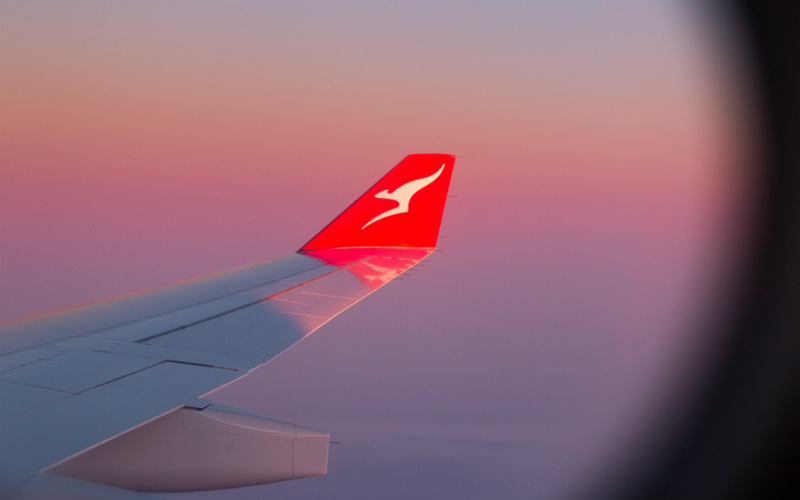Speaking at a press conference at the Sydney Cricket Ground, Qantas CEO Alan Joyce announced a $25 million investment into the popular frequent flyer program.
Qantas will now offer an extra one million seats for customers paying for flights with points, and will also reduce the number of points needed for international and domestic flights by up to 10%.
According to Qantas, this change will save flyers an average of $200 per return flight.
However, these cuts are for economy flights – upgrades and business class seats will now require more points.
It will also cut carrier charges – the costs associated with booking via points – by as much as 50%.
“The Qantas Frequent Flyer program has always been about rewarding customers for their loyalty,” Mr Joyce said.
“These changes are about making it easier for members to access those rewards and help to keep them highly engaged, which in turn is good news for our business as a whole.
“We know the majority of our members want to use their points to take a dream trip overseas, so we are adding more reward seats … to places like London, Los Angeles, Tokyo and Singapore.”
Qantas to revamp frequent flyer program.
— Sky News Australia (@SkyNewsAust) June 20, 2019
CEO Alan Joyce: Today we have an amazing, big program. We have 12.7 million members. The frequent flyer points, all of those 12.7 members, have travelled one trillion km since the program has begun.
MORE: https://t.co/2uPGnIFKwf pic.twitter.com/zA9X2w3sgA
Speaking of the increase in points required for upgrades and business class seats, Mr Joyce said this change has been made to “better reflect the value of the premium experience”.
“While the points required for business class seats on international and domestic flights will increase slightly, it is the first increase in 15 years and the product has improved a lot in that time.”
Other key changes announced include:
- The creation of a new tiered Points Club program, which according to Qantas will better reward members who earn more of their points through on-ground transactions;
- The introduction of the new Lifetime Platinum status, recognising the airline’s most loyal flyers. Members who earn over 75,000 Lifetime Status Credits will enjoy the benefits of Platinum Status for life.
“Australians love earning Qantas Points and that momentum has seen us expand our number of retail partners and extend into new areas like financial services and insurance,” Joyce said.
“The result is that people have lots of opportunities to earn points, so this overhaul is about making sure they have more opportunities to use them.”
How much can you save with these changes?
The reduction in carrier charges has the potential to create the biggest savings here.
While the fees aren’t changing for domestic flights, international flyers who book with points could save hundreds of dollars.
Here are two examples provided by Qantas in its media release:
| Route | Old charge | New charge |
|---|---|---|
| Return Sydney-London business | $1,080 | $700 |
| Return Sydney-New York economy | $360 | $180 |
Economy flights have long provided lesser-value when bought through frequent flyer points compared to using points for business class flights – this gap has now been reduced due to the change.
By reducing the points required to book an international economy flight, an economy seat from Melbourne to LA would now cost nearly 84,000 points (down from 90,000), with fees of about $390 (down from over $500).
This could be welcome news for budget fliers, but those looking at anything above economy may find their points are worth less now, although this could be offset by the reduction in fees.
These changes could impact a lot of people – 35% of all credit card spend in Australia is made on a Qantas or Qantas Frequent Flyer co-branded credit card, while its Frequent Flyer program itself has nearly 13 million members.



 Harrison Astbury
Harrison Astbury
 Denise Raward
Denise Raward

 Emma Duffy
Emma Duffy
 William Jolly
William Jolly

